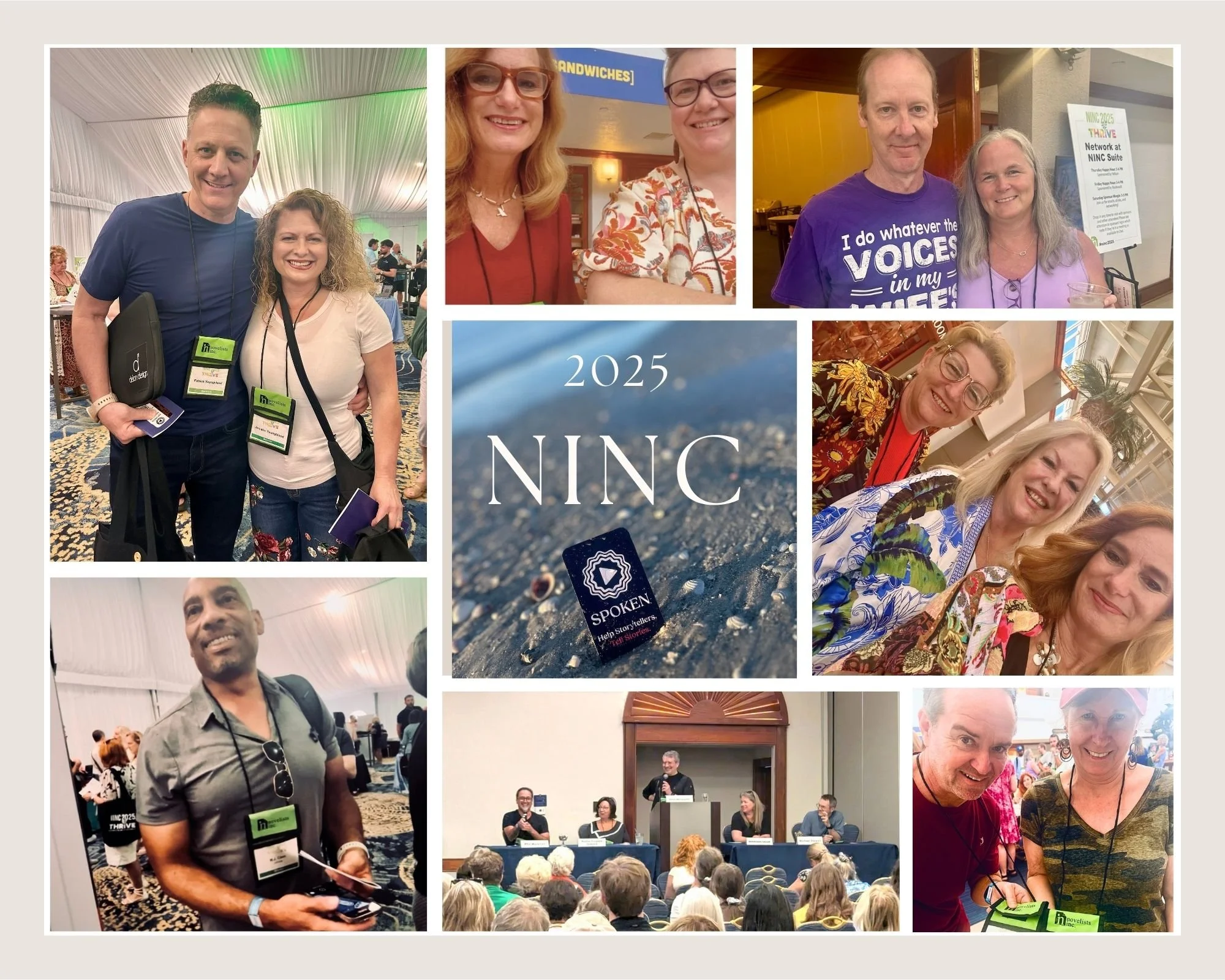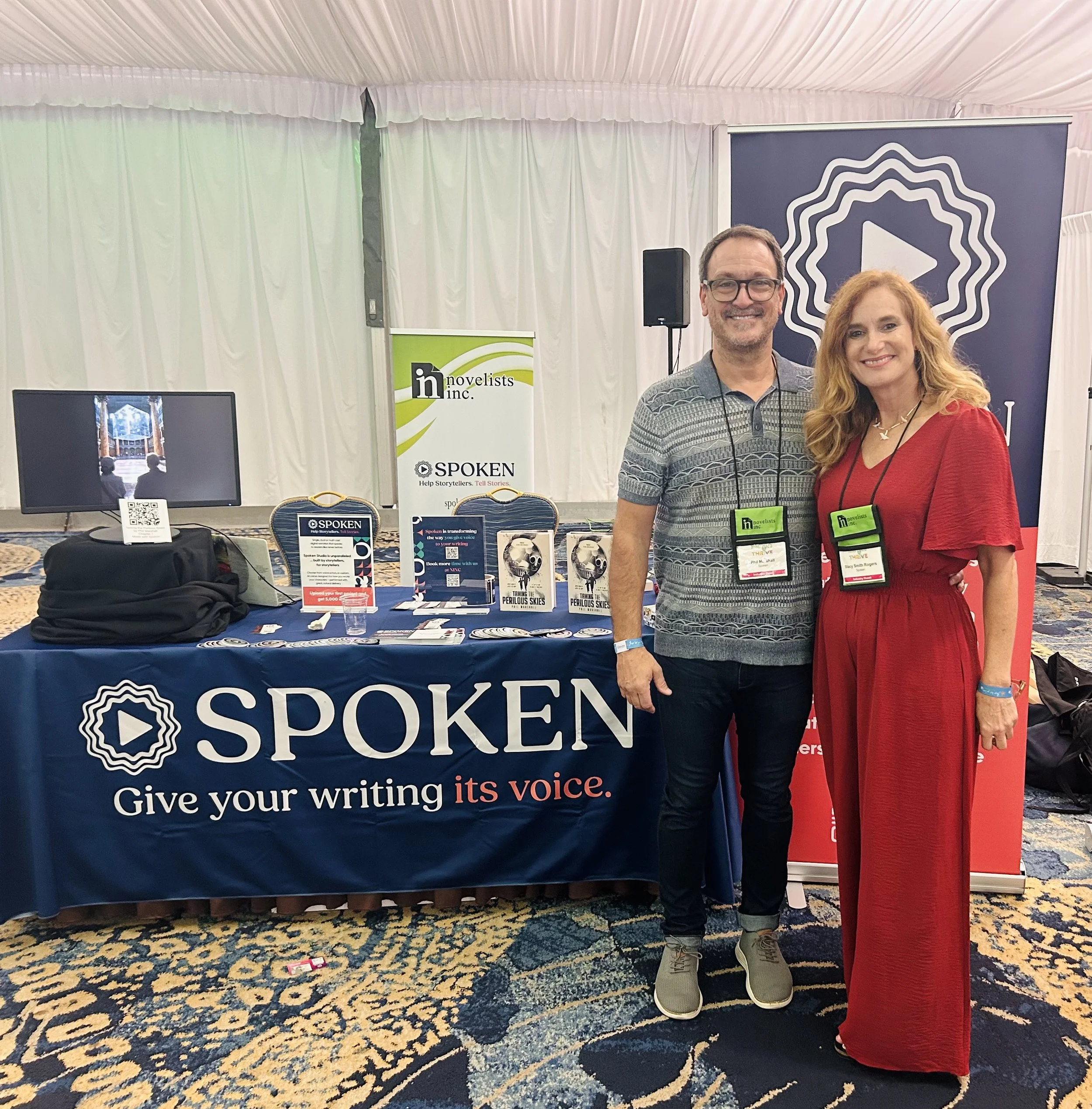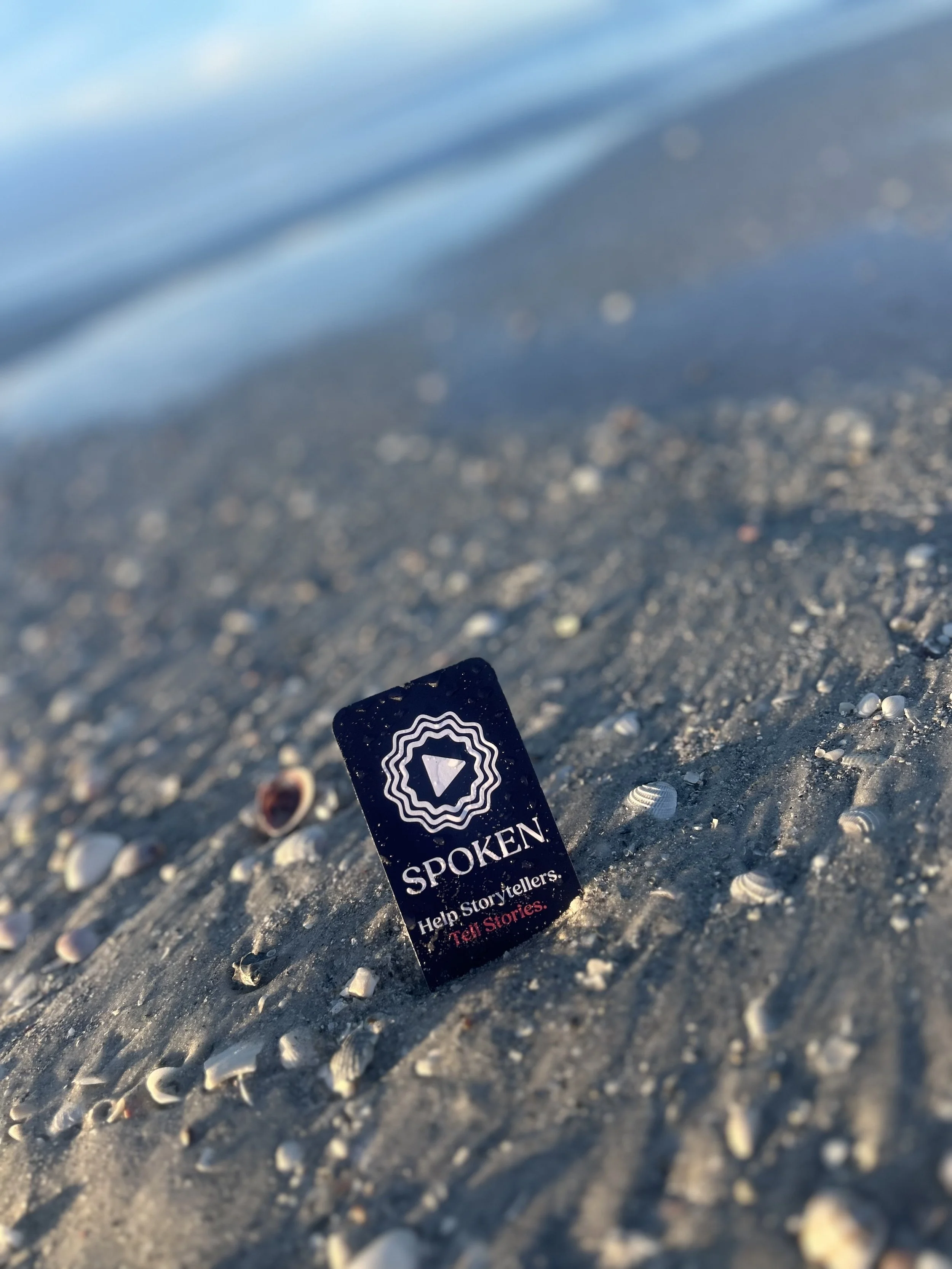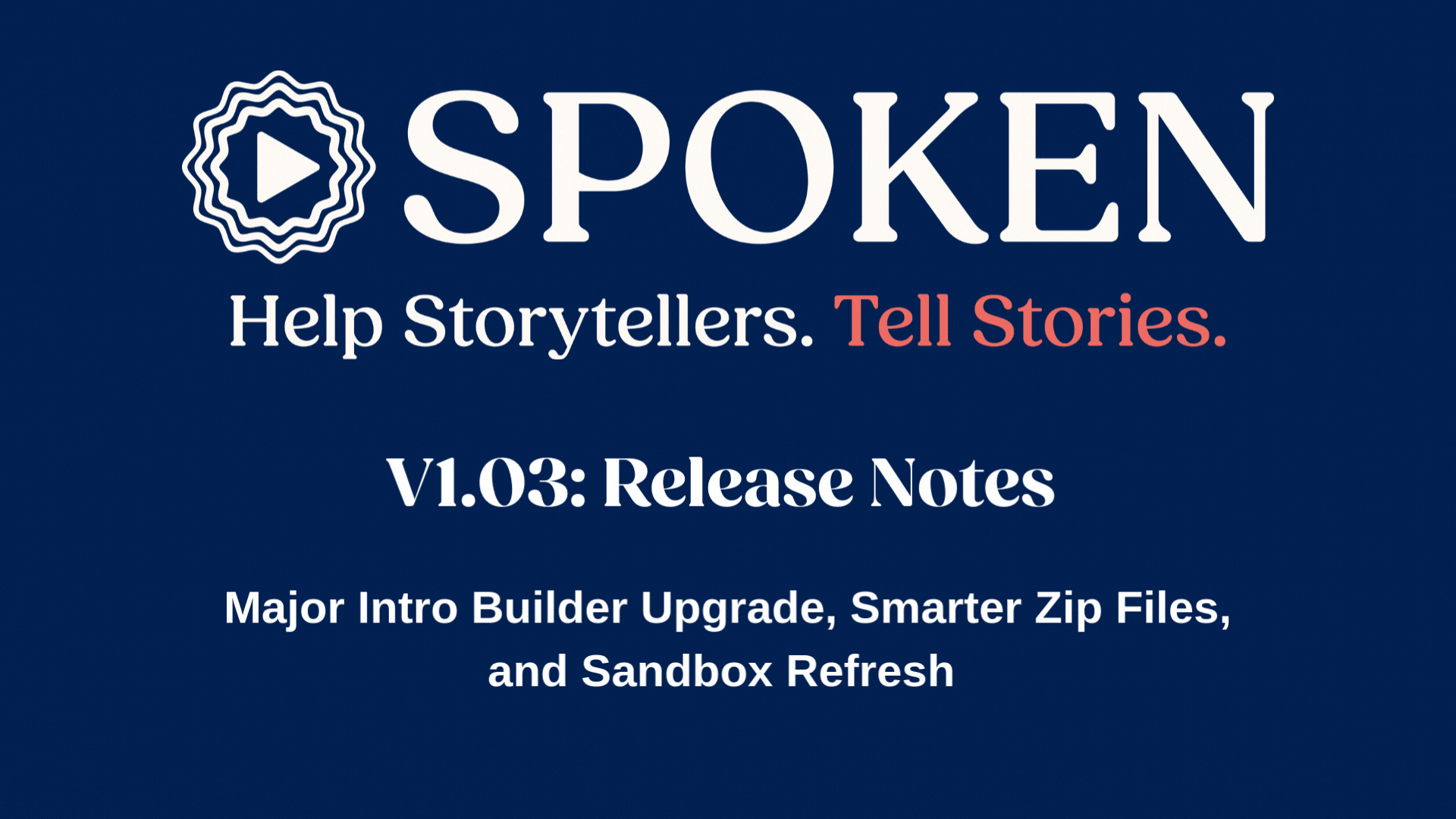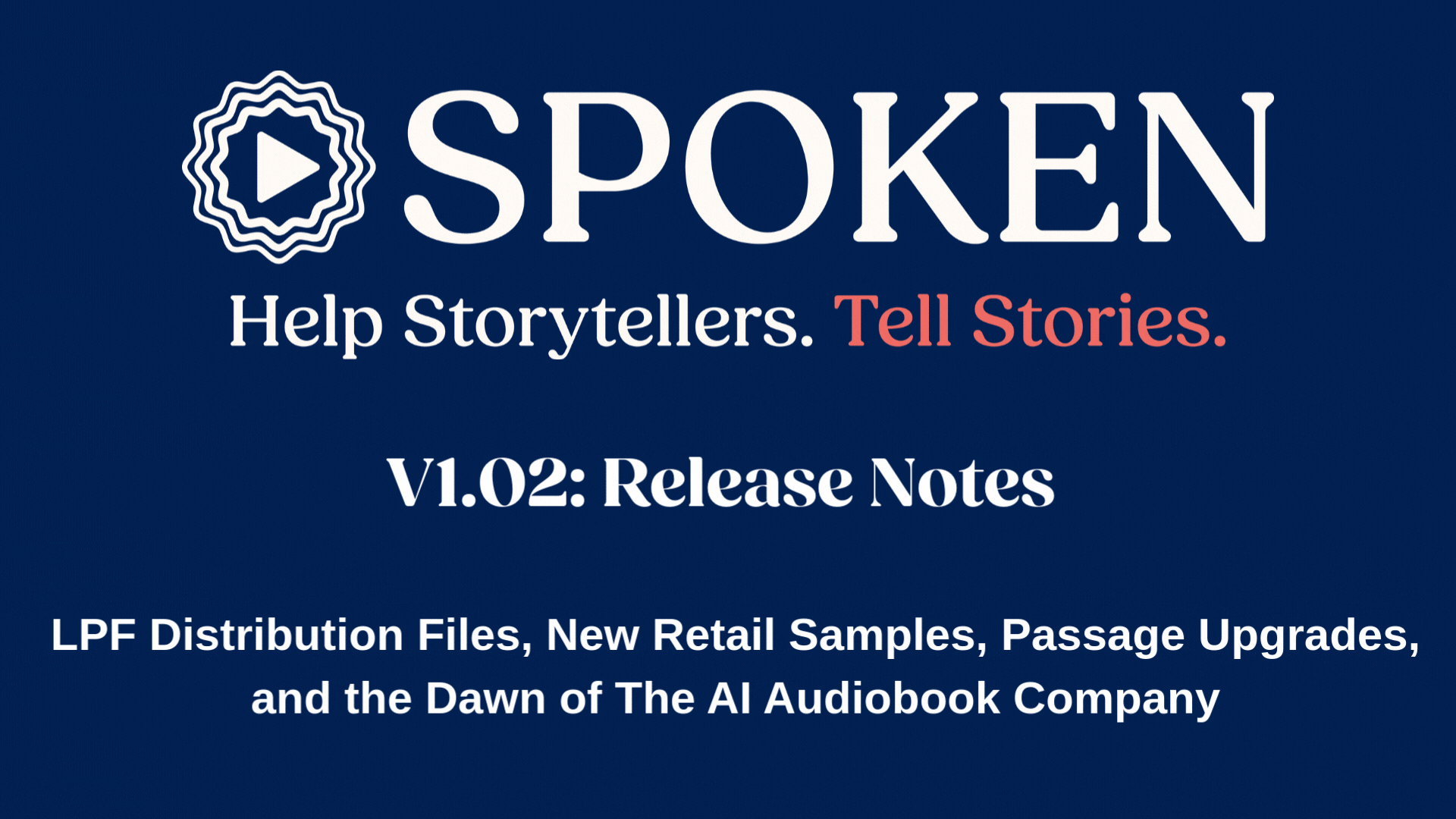Riding the NINC Wave
Our time at Novelists, Inc. (NINC) revealed what authors need in regard to to audiobook publishing. Right there along the sandy shores of St. Petersburg, Florida, where hundreds of established independent authors gathered to learn how to propel their businesses forward, we received the confirmation …
They’re eager and ready to dive head-on into the digital narration waters with us. And we’re ready to welcome them!
In every interesting story, there’s something that propels the plot forward – an event that challenges or inspires. As authors and readers, we all anticipate the energy, the excitement surrounding the shift, the pivotal moment. For the Spoken story, that pivotal moment is NOW. And we couldn’t be more excited to share it with you!
This wave of momentum has been building for the last six months. In March, we attended the Writer MBA conference, where curious (and often hesitant) authors were interested in dipping their toes into the waters of digital narration. As we focused on Studio improvements over the summer and launched our V1 publicly in August, we could feel the momentum tugging, propelling us forward. Spotify’s acceptance of Spoken-created work was one catalyst. Growing interest from industry partners was another. Our advocacy efforts for digital narration were paying off, and momentum was building.
The Tipping Point for Authors
Our experience at the Novelists, Inc. (NINC) conference proved that we are finally at that tipping point. Right there along the sandy shores of St. Petersburg, Florida, where hundreds of established independent authors gathered to learn how to propel their businesses forward, we received the confirmation …
They’re eager and ready to dive head-on into the digital narration waters with us. And we’re ready to welcome them!
Phil Marshall and Stacy Smith Rogers welcomed hundreds of authors into the Spoken story at Novelists, Inc.
We’ve been reflecting on what we experienced at NINC and processing on the feedback and valuable insights, including these five key takeaways:
Indie authors want to offer narrated versions of their work, but most can’t justify the cost.
Many who have invested in studio-recorded narrations (around $3,000–$5,000 each) are struggling to earn that money back. In fact, we estimate that only about 20 percent actually profit from their audiobooks.
Authors at NINC have an average of 50 backlist titles that have never been made into audio.
Operating at a financial loss to give readers what they crave just isn’t feasible. One author I spoke with is $10,000 in debt from audiobooks. With 100 books on her backlist, she simply can’t afford to continue narrating traditionally.
An author at the audiobook roundtable put it best:
“When I heard a sample of Spoken, it reminded me of digital photography. We all rejected it at the time, but do any of you still shoot on film?”
Beyond cost savings, authors are excited by what’s possible with Spoken.
While financial reasoning was a shared perspective, there was enthusiasm for what’s possible with Spoken, beyond the cost-savings. After listening to this short example and the first chapter of Taming the Perilous Skies, they didn’t say it was merely acceptable, tolerable, or listenable. They were genuinely excited and intrigued by the rich listener experience and features previously unattainable to them, including multi-voice, duet, and personal voice narration.
Authors still have concerns about unethical AI practices and care deeply about voice actors (and we do too).
Understanding how Spoken operates and that voice actors are compensated for their cloned voices has helped our authors feel more comfortable.
Equally enlightening were our connections with industry partners, influenced by several of our users bending their ears. Thank you. Your voices at these conferences have much greater impact than ours ever could.
With prospective integrations of Spoken Studio and the powerhouse reach of the businesses we’re partnering with, an undercurrent of broader acceptance and accessibility to widespread AI audiobook publishing is building.
It’s an exciting time here at Spoken. Thanks for riding the waves of momentum with us!
V1.03 Release Notes: Major Intro Builder Upgrade and Smarter Zip Files
Spoken is leveling up once again. With this V1.03 release, we’ve completely reimagined how authors build project introductions, making them flexible, modular, and distribution-ready from the very first passage. We’ve also streamlined how ZIP exports are organized with automatic installment numbering, refreshed the Sandbox experience to make Studio easier to explore, and rolled out stability fixes to improve playback performance.
Spoken is leveling up once again. With this V1.03 release, we’ve completely reimagined how authors build project introductions, making them flexible, modular, and distribution-ready from the very first passage. We’ve also streamlined how ZIP exports are organized with automatic installment numbering and rolled out stability fixes to improve playback performance.
Intro Builder Update
We’ve overhauled how authors create and customize their project introductions, making the process more flexible, transparent, and professional.
What’s New:
Segmented Intro Fields
The introduction is now broken into distinct, editable fields:Made with Spoken
Title (project name)
Author (required)
Narrator Names (supporting multiple digital voices)
Personal Intro (optional voice-recorded greeting)
All to be performed with any voice you select from your project.
Inline Controls
Every field includes direct controls for:Generate or re-generate narration at the passage level
Editable text for maximum customization
Narrator Selection
Choose your narrator voice from a dropdown within the Made with Spoken credit, ensuring consistency across intros.Completion Check
A new safeguard — “Complete Intro to Continue” — ensures your intro is finalized before you move on to Installments, making distribution-ready intros seamless.
This update makes intros more modular, customizable, and polished, giving authors greater control over credits, presentation, and overall professionalism right from the start.
Zip File Export — Take It With You
We’ve improved how project files are packaged for download:
Each installment is assigned an ordered number corresponding to its position in the project file
Numbering is automatically applied even if the author does not number their titles
Exported ZIP files display installments in correct sequential order
Numbering is visible only in file names (for organizational clarity) and does not alter original chapter titles.
Bug Fixes & Improvements
Playback is now more consistent across Studio, without the need for page refreshes
Opening credits can now play more smoothly from the Chapters tab on project pages
Several smaller stability fixes for reliability and ease of use
With V1.03, Spoken delivers a more professional, customizable workflow from the very first passage, improved organization on export, and greater reliability across Studio
Spoken V1.02 Release Notes – LPF Distribution Files, New Retail Samples, Passage Upgrades, and the Dawn of The AI Audiobook Company™
Spoken V1.02 is all about making your audiobooks distribution-ready. With this release, we’re delivering full LPF-compliant downloads, Independent Passage Editing, retail-ready samples, smoother playback, and a set of refinements that raise the bar for production quality.
Spoken V1.02 is all about making your audiobooks distribution-ready. With this release, we’re delivering full LPF-compliant downloads, Independent Passage Editing, retail-ready samples, smoother playback, and a set of refinements that raise the bar for production quality.
LPF File Downloads for Distributors
Spoken now provides LPF-compliant files for download, meeting the standards required by distributors such as InAudio. Projects are automatically structured to align with professional audiobook submission requirements:
Chapters and segments
Opening credits standardized:
“Made with Spoken, Jingle, [Title], Written by [Author Name], Author-recorded introduction (optional).”
Retail samples under 5 minutes
Audio requirements:
Constant bit rate ≥192 kbps, 44.1 kHz sample rate.
1000ms of silence (room tone) is now added to the beginning and end of every installment, including opening credits.
During mastering, the first passage’s padding is automatically stripped and replaced with this standardized 1000ms silence.
Cover art
This ensures audiobooks created on Spoken are ready for distributor submission the moment you export them.
Independent Passage Editing
We’ve refined how the Update button works at both the passage and batch level, giving authors more control and flexibility when revising narration.
Individual Passage Updates
Clicking Update on a single passage now processes that passage independently.
Multiple passages can be updated in parallel if each is triggered individually.
Cancel will cancel that passage’s update, including narration if it has already started.
Batch Updates
Clicking the Update X Passages button at the bottom of the page processes all pending passages together, in one batch.
While a batch update is running, individual passage Update buttons are disabled (grayed out).
Authors can still edit passages during a batch run; updates can be applied once the batch completes.
This new design provides a clear distinction between individual passage control and installment-wide batch updates, while preventing conflicts and ensuring smooth processing.
5-Minute Retail Samples
Spoken now automatically generates 5-minute samples for every project:
Included when you Take It With You (TIWU).
Streamable directly on your project page as a preview.
This makes it easy to promote your audiobook and meet retailer requirements with no extra steps.
Playback Improvements
Narration now includes better breathing room between passages, eliminating cutoff issues and creating a smoother, more natural listening experience.
Spoken is The AI Audiobook Company™
With this release, we’re unveiling an expansion of our brand identity: Spoken, The AI Audiobook Company™.
This moniker reflects our singular focus. While many companies experiment with text-to-speech, Spoken is purpose-built for authors and storytellers. Our mission is to deliver professional-quality audiobooks with unmatched listening experiences — and to ensure your work is distribution-ready for every major streaming and retail platform.
This identity represents more than a tagline — it marks Spoken’s evolution into the dedicated home for AI-powered audiobook creation.
Fixes & Polishing
This release also resolves a wide range of issues to improve stability and workflow:
UI fixes for clearer, more consistent display.
Narration reliability improvements, reducing glitches and dropouts.
Character merging is more accurate in multi-voice projects.
Passage editing is smoother and more reliable.
These refinements make the authoring process more seamless and dependable from start to finish.
By Storytellers. For Storytellers.
We believe that giving voice to writing isn’t just for those with resources to create elaborate productions or patience to navigate complex publishing hoops. Spoken was created by a small team of storytellers based in Portland, Oregon who believe in empowering self-publishers.


